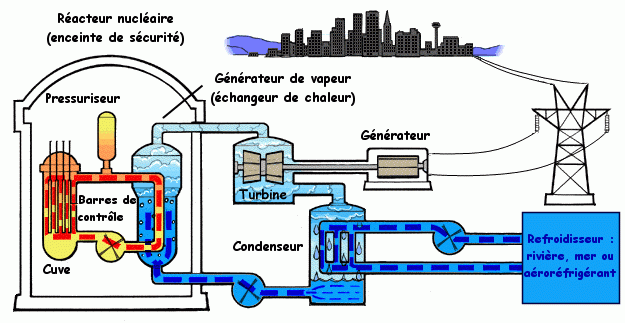-
 Chemoprevention
Chemoprevention
-
 Radiating texture
Radiating texture
-
 James Webb space telescope
James Webb space telescope
-
 AZF disaster
AZF disaster
-
 Growth twin
Growth twin
-
 Antipsychotic
Antipsychotic
-
 Courgette
Courgette
-
 Egg
Egg
-
 Caucasian Elm
Caucasian Elm
-
 Nitrogen vehicle
Nitrogen vehicle
-
 Transposition cipher
Transposition cipher
-
 Filtrate
Filtrate
-
 Peas
Peas
-
 Severe persistent asthma
Severe persistent asthma
-
 Bone marrow suppression.
Bone marrow suppression.
-
 Cryptographic system
Cryptographic system
-
 Systole
Systole
-
 Ecchymosis
Ecchymosis
-
 Apocrita
Apocrita
-
 Primitive ocean
Primitive ocean
-
 Direct access
Direct access
-
 Abscess
Abscess
-
 Antibodies
Antibodies
-
 Renewable energy
Renewable energy
-
 BRA (French avalanche risk bulletin)
BRA (French avalanche risk bulletin)
-
 Riemann surface
Riemann surface
-
 Minatec
Minatec
-
 Leptin
Leptin
-
 Transplant organ or tissue
Transplant organ or tissue
-
 Dialysis
Dialysis
Nuclear power plant
A nuclear power plant produces electricity using the nuclear energy, present in the nuclei of atoms. This energy comes from strong interaction (one of the four known forces, or interactions, in the universe, alongside gravity, electromagnetism and weak interaction). This force ensures the cohesion of atomic nuclei. Two principles exist to recover a - small - part: the destruction, or fission of a heavy nucleus (uranium, plutonium), or the fusion of a very light element (hydrogen or one of its isotopes, deuterium or tritium).
Fission is used in atom bombs ("A bombs") and nuclear power plants. Fusion is used in hydrogen bombs ("H bombs"), also called thermonuclear bombs. Fusion is also at the origin of the heat of stars and the sun. Attempts are being made to develop methods for using fusion in future power plants. The ITER programme (International Thermonuclear Experimental Reactor) is part of this research.
How a nuclear power plant works
A classic nuclear power plant contains one or more nuclear reactors, in which energy is produced initially as heat, and a set of systems that convert of this heat into electricity. Once the reaction is initiated in the reactor, it self-sustains itself because the colliding nuclei emit neutrons that collide with nearby nuclei. This "chain reaction" is controlled by lowering control rods (metal) to absorb some of the neutrons. The heat produced is converted into electricity in the same manner (in principle) as in a coal or oil plant. When the water is heated it produces steam, which turns a turbine, which generates electricity.
The output varies between 30% and 40%. The electric power produced is often in the order of 1,000 megawatts. In France, production units (or plant units) are standardised, producing 900 MWe (e for electrical), 1,300 MWe or 1,450 MWe.
Power plants differ depending on the technical choices made: the type of fuel (natural or enriched uranium, plutonium), the moderator (the fluid that maintains the reaction in the core, which can be regular water, heavy water or graphite), the heat transfer fluid (water, pressurised water, heavy water, carbon dioxide, sodium). The water circuit can be single or double.
Today, the most commonly used technique is the pressurised water technique, or PWR (Pressurized Water Reactor), using water under pressure as a moderator and as a heat transfer fluid. The fuel is enriched uranium.
The entire process produces of waste. One tenth of this waste is long-lived radioactive waste, which requires complex treatment and storage.
 Operating diagram of a pressurised water nuclear power plant. On the left, the reactor houses the tank containing the nuclear fuel (enriched uranium). The moderator (water) circulates, maintained under pressure by the pressurizer. Nuclear reactions are regulated by the control rods (if they are all lowered, the reaction stops). In a heat exchanger, this is transmitted to the heat transfer fluid (water), which transforms it into vapour and makes the turbine turn, which activates an electricity generator. The water must then be cooled, with river water, for example, and then goes back to the exchanger. © Pâris Almageste /Licence Creative Commons
Operating diagram of a pressurised water nuclear power plant. On the left, the reactor houses the tank containing the nuclear fuel (enriched uranium). The moderator (water) circulates, maintained under pressure by the pressurizer. Nuclear reactions are regulated by the control rods (if they are all lowered, the reaction stops). In a heat exchanger, this is transmitted to the heat transfer fluid (water), which transforms it into vapour and makes the turbine turn, which activates an electricity generator. The water must then be cooled, with river water, for example, and then goes back to the exchanger. © Pâris Almageste /Licence Creative Commons
Latest
Fill out my online form.



